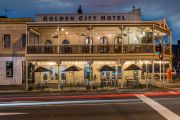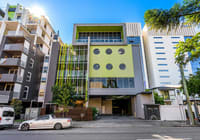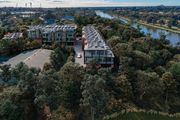
Grollos put Mount Buller hotel stake up for sale
The wealthy Grollo family, which has for decades developed property at Victoria’s Mount Buller, is planning to sell a $5 million hospitality asset to a small investor for the first time as it also progresses plans to create a $1 billion institutional-grade fund of alpine and regional key worker housing.
The sale of the 811-square-metre Kooroora Hotel, built five years ago as part of a wider redevelopment of commercial and residential property in the Mount Buller Village, was the first asset it aimed to sell to an investor, rather than an owner-occupier business, Grollo Group director Martin Ansell said.

“This was always something we were going to set up, put leases in place and move on once we knew it was under control,” Ansell told The Australian Financial Review.
“Normally, if it’s commercial, an owner-occupier is using them. This is the first one we’ve sold like this.”
A sale has not yet happened. The fully leased two-level bar and bistro inside the five-storey mixed-use building was to go up for sale in commercial agency Burgess Rawson’s boardroom auction last week, but it was pulled because documentation wasn’t ready.
But the marketing process had identified buyers wanting to acquire the bar and restaurant through their self-managed super funds (SMSFs) and a transaction was likely this week, Ansell said.

The family company also owns many assets at Mount Buller through its entity Buller Ski Lifts, which controls skiing facilities and infrastructure, a ski school, the Mount Buller Chalet hotel and suites, the ABOM Hotel and various retail properties at the mountain and nearby town of Mansfield.
A sale of the hotel – along with a separate two-level, three-bedroom chalet that the Grollos are marketing with a $3.15 million asking price – would give the group some funds needed to reinvest into its next plan: a managed fund with a portfolio of up to 10,000 key worker housing units in regional areas.
That would put the family – which started acquiring assets on the mountain in 1987 – in contact with investors at the other end of the scale from SMSF buyers – institutions such as super funds using it as way to gain more exposure to Australia’s desperate need for housing.
Regional key worker housing is a subset of the emerging build-to-rent asset class. While the stable and scalable income flows of institutional housing assets are attractive to super funds, much was still unclear, said Tim Slattery, the managing partner of private equity manager ASA Real Estate Partners.
Investors wanted to be confident about the rental income stream from housing developments for key workers – traditionally lower earners – especially at a time when construction costs were high, as well as the scope for capital growth, Slattery said.
“We haven’t been convinced on the returns for the residential build-to-rent sector, relative to other asset classes,” he told the Financial Review. “That’s not to say markets don’t evolve and investment cases don’t change.”
Grollo Group is already working with local authorities to secure permits for the 1800 beds it wants to develop for workers on land it controls at Mount Buller, Bogong Village near Falls Creek and around Mount Hotham Airport, which it acquired in late 2022 for more than $6.5 million, Ansell said.

It’s still early days – the group will only start negotiations with potential capital partners and institutional tenants wanting to secure accommodation for staff after getting planning permits – but under current plans it will develop 400 beds at Mount Buller, a further 300 at Bogong Village, in addition to its existing 200, and about 600 beds at Mount Hotham, he said.
The new housing assets, with an end value of $120 million to $130 million, would boost the existing $40 million to $50 million worth of housing to $180 million, he said.
“There are industry super funds that at the right scale would be interested in that,” Ansell said.

Once these “pilot projects” showed how the emerging asset class of regional key worker housing could be developed, the model could be applied more widely to other areas, he said.
“There’s a number of different sites earmarked that we want to look at,” Ansell said. “But it’s dependent on that capital.”











